Volunteer Fire Fighter Dies and Junior Fire Fighter Is Injured After Tanker Rollover During Water Shuttle Training Exercise - Kentucky
 Death in the Line of Duty…A summary of a NIOSH fire fighter fatality investigation
Death in the Line of Duty…A summary of a NIOSH fire fighter fatality investigation
F2001-01 Date Released: March 1, 2002
SUMMARY
On November 16, 2000, a 19-year-old male volunteer fire fighter (the victim) died and a 17-year-old junior fighter was injured when the victim lost control of the tanker truck (Tanker 63) he was driving. At 1900 hours, the fire department began performing a water shuttle training exercise. At approximately 2000 hours, the victim was driving Tanker 63 en route to the station with the junior fire fighter as a passenger. Tanker 63 was traveling eastbound on a two-lane state road when it drifted off the east edge of the roadway. The victim steered it back onto the roadway. The tanker traveled a short distance on the center line before the victim lost control after he overcorrected in an attempt to steer the tanker back into the right eastbound lane. The tanker left the right (east) roadway and traveled down an embankment and through a ditch line. The tank separated from the chassis, became airborne and rotated approximately 180 degrees before landing on the ground, while the truck overturned and rolled upside down before coming to rest on its top. The junior fire fighter was ejected from the tanker and sustained serious injuries. The victim was trapped inside the cab of the truck. He was removed and taken to a local hospital where he was pronounced dead.
NIOSH investigators concluded that, to minimize the risk of similar occurrences, fire departments should
- ensure all drivers of fire department vehicles are responsible for the safe and prudent operation of the vehicles under all conditions
- enforce standard operating procedures (SOPs) on the use of seatbelts in all emergency vehicles
Additionally,
- fire departments and apparatus constructors should ensure that second unit body mounting systems are of substantial design and construction
INTRODUCTION
On November 16, 2000, a 19-year-old male volunteer fire fighter/driver (the victim) died and a 17-year-old junior fire fighter was seriously injured in a tanker truck rollover that occurred during a water shuttle training exercise. On November 21, 2000, the U.S. Fire Administration notified the National Institute for Occupational Safety and Health (NIOSH) of this incident. On January 8, 2001, a Safety and Occupational Health Specialist, a Safety Engineer and a Statistician from NIOSH, Division of Safety Research, investigated the incident. Meetings and interviews were conducted with the investigating officers from the county sheriff’s department, the Chief and members of the fire department involved in the incident, and with neighboring fire departments who had responded to provide mutual aid. The NIOSH investigators also reviewed copies of photos, police and reconstruction reports, training records, and standard operating procedures (SOPs), and they visited the incident site and photographed the tanker. The volunteer fire department involved in this incident serves a population of 3,800 in a geographical area of 36 square miles. The department is comprised of 27 volunteer fire fighters and 8 junior fire fighters. The tanker involved in this incident was a 1987 Chevrolet C-70 with dual wheels on the rear axle. The truck had been used originally as a fertilizer truck, and in 1991 the department bought the truck and had a new 1,500-gallon capacity baffled water tank mounted to the chassis by a local welding shop. The tank was full of water at the time of the incident. Note: The estimated weight of the truck and its load at the time of the incident was 25,000 lbs. There were written maintenance records kept by the department for the truck. Weather conditions on the evening of the incident included heavy fog in the area of the incident and a reported humidity of 96%. The roadway was dry. The victim had a basic and current Class D driver’s license. Note: In the State of Kentucky there are no requirements for a special class or type of driver’s license, or a required state vehicle inspection, for this type of fire apparatus. It is believed that the victim and the junior fire fighter were not wearing their seat belts at the time of the incident. The department did have a written policy which required the use of seat belts; however, it was not enforced. The road on which the engine was traveling was a two-lane, asphalt state road marked with a solid yellow center line on the westbound side and a broken yellow center line on the eastbound side. Indented rumble strips had been installed on both edges of the road. The pavement, including the rumble strip indentations, was soft and crumbled along the eastbound edge. The road measured approximately 24 feet wide, and there were no shoulders in the area of the incident. The road had a posted speed limit of 55 mph. The State of Kentucky has mandatory requirements for certified fire fighters which require completion of 150 hours of various training courses before being able to participate in fighting a structure fire. The victim had completed approximately 191 hours of those various State fire and rescue training courses. The department requires emergency vehicle operators to attend 12 hours of an emergency driving training course offered by the State. The victim had completed 18 hours of emergency driver training and in addition, the department requires all operators of emergency vehicles to attend a minium of 3 hours of refresher driving training each year. The victim had attended 5 hours of refresher driving training for the year. The requirements for driving include having a practical evaluation on an apparatus and the demonstration of skills on a road test and driving concourse. At the time of the investigation, department training records were maintained. The victim had 4 years’ experience with the department, 3 years as a junior fire fighter, and 1 year as a qualified driver. The junior fire fighter had 4 hours of training, and he had been with the department for 8 days.
INVESTIGATION
On November 16, 2000, at 1900 hours, the volunteer fire department began a water shuttle training exercise. The training involved a process in which a tanker would travel to the fill site, which was approximately 3 miles from the fire station. Once at the fill site, the tanker would be filled with water and then shuttled to the dumping site at the fire station. Approximately 11 fire fighters were participating in the training exercise. Each fire fighter would rotate in the positions of driving and being at the fill and dumping sites. Toward the end of the training exercise, at approximately 2000 hours, the fire fighter (the victim) was driving Tanker 63 with the junior fire fighter riding as a passenger. Tanker 63 was traveling eastbound from the fill site to the fire station on a two-lane state road with a posted speed limit of 55 mph (see Photo 1). Traveling westbound en route to the fill site was Tanker 61 with a Captain driving and a junior fire fighter on board. Tanker 63 continued to travel for approximately another 150 feet, and according to evidence collected by the County Sheriff’s Department, the tanker for unknown reasons drifted off the pavement edge on the east (right) lane. The tanker’s right front and rear tires dropped off the road onto a grassy area where there are no shoulders. Note: The highway patrol estimated that the right tires of the tanker initially left the roadway while the vehicle was traveling approximately 40-50 mph. The victim apparently overcorrected when he steered the tanker back onto the road, and the tanker traveled a short distance on the center line, which divides the eastbound and westbound lanes of the roadway. The victim attempted to correct the direction of the tanker’s travel back into the eastbound lane; however, he overcorrected and the tanker veered off the eastbound (right) lane and traveled down a slight embankment and through a ditch line (see Diagram). According to the County Sheriff investigators, at some point during the incident, the water tank began to separate from the chassis, and it is believed that as the truck entered the ditch line the tank became airborne, struck the east edge of the driveway, and began a flat rotation of 180 degrees. The driver side front tire was turned to the right and dug into the west edge of the driveway, causing the truck to pitch forward and become airborne. The junior fire fighter was ejected, and it is believed that he exited the truck through the windshield as the truck crossed the driveway. Note: The junior fire fighter was wearing a turnout coat, jeans and work boots. The tanker was equipped with a shoulder and lap seat belt safety restraint system for the driver and passenger positions. The highway patrol’s report indicated that the victim and junior fire fighter were not wearing their seat belt safety restraint systems at the time of the incident. The truck remained airborne until coming to rest upside down facing east while the tank came to rest in an upright position facing west. Both the tank and truck came to rest in the yard east of the driveway. Tanker 61 arrived at the fill site when Engine 62, with a fire fighter driving, was leaving en route to the fire station. After traveling approximately 1 mile from the fill site, Engine 62 came upon the incident scene (see Photo 2). The fire fighter from Tanker 62 radioed the Chief and reported that Tanker 63 had gone off the road and overturned. At 2008 hours, the Chief radioed to Central Dispatch to report the incident and request assistance while he responded from the fill site in Tanker 61 with a Captain driving. Central dispatched an ambulance to respond at 2008 hours. The fire fighter from Engine 62 observed the junior fire fighter lying face down approximately 15 feet from the cab of Tanker 63, and with the assistance of the residents who live on the property, he turned the junior fire fighter over to check his condition. The junior fire fighter was unconscious; however, he had a pulse and was still breathing. The fire fighter asked the residents to remain with the junior fire fighter. The fire fighter then went over to Tanker 63 and walked around the cab of the tanker looking for the victim (see Photo 3). After getting down on the ground on the driver’s side, he could see the victim’s legs. The fire fighter then crawled to the front of the cab area where the windshield was missing, and he could see the victim, so he crawled into the cab area to see if he could move the victim. The fire fighter attempted to make verbal contact with the victim who was conscious but not moving and asking for help. The fire fighter assured the victim that help was on the way and went back to the junior fire fighter to check his status. At 2009 hours Tanker 61 arrived, and the Chief assumed the role of Incident Commander (IC) and did a quick assessment of the scene. The fire fighter from Engine 62 told them that the victim was trapped inside the cab. The Captain from Tanker 61 went to the tanker to check on the entrapped victim. He crawled on the ground and into the cab area and found the victim, who had a pulse and was asking for help. At 2010 hours, the Chief radioed to Central Dispatch to request a heavy rescue truck from a career department, a mutual-aid volunteer department, and an additional ambulance. Between 2012 hours and 2015 hours, the following were dispatched to the incident scene: Rescue 2, Engine 48, and an additional ambulance. Rescue 2 responded with a fire apparatus operator-EMT, a company commander, and two fire fighter-EMTs, and Engine 48 responded with two Captains on board. Monitoring radio traffic but not dispatched, Engine 64 from the victim’s department responded to the scene with a training officer/engineer and two fire fighters. At 2014 hours, Engine 64 arrived on the scene and fire fighters helped pull a 2 ½-inch hoseline off Engine 62 due to concerns of a fuel leak from Tanker 63, and the training officer/engineer went to provide assistance to the junior fire fighter. At 2016 hours, Rescue 2 arrived on the scene, did a scene size-up, and began to unload equipment off the Rescue truck with assistance from other fire fighters on the scene. While performing the size-up, the Captain from Tanker 61 determined that the victim did not have a radial pulse. The fire apparatus operator-EMT from Rescue 2 reconfirmed that there was no radial pulse and informed the fire fighters. At approximately 2017 hours, the first ambulance arrived on the scene with two paramedics, who provided medical attention and prepared the junior fire fighter for transport to an area hospital. The training officer from Engine 64 drove the ambulance so both paramedics could provide care to the junior fire fighter. At approximately 2020 hours the second ambulance arrived on the scene with two paramedics to provide care to the victim. The fire fighters from Rescue 2 and members from other departments used air bags to slowly raise the driver’s side of the tanker approximately 12 to 14 inches. They also used cribbing, spreaders, and cutters from a powered hydraulic tool to extricate the victim. During the extrication process, which took approximately 15 minutes, ambulance personnel were able to start an airway and provided medical attention to the victim. At 2028 hours, Engine 48 arrived on the scene. The victim was removed through the driver’s side door, and the fire fighters and emergency personnel loaded him into the second ambulance for transport to the hospital. The fire apparatus operator from Rescue 2 and a Captain from Engine 48 assisted with care of the victim in the ambulance while transporting him to a local hospital. Cardiopulmonary resuscitation was administered on the way by personnel in the ambulance. The victim did not have a heartbeat or pulse and he was pronounced dead at the hospital at 2118 hours. The junior fire fighter remained hospitalized for 51 days and received rehabilitation for approximately 10 weeks following his discharge from the hospital. He is expected to make a full recovery.
CAUSE OF DEATH
The death certificate lists the cause of death as massive internal injuries.
RECOMMENDATIONS/DISCUSSION
Recommendation #1: Fire departments should ensure all drivers of fire department vehicles are responsible for the safe and prudent operation of the vehicles under all conditions.1,2
Discussion: Fire departments should ensure drivers of fire service vehicles are familiar with the potential hazards/conditions that exist on the roadways (e.g., insufficient shoulder) on which they may be traveling. In this incident, the speed of the tanker truck when it left the roadway was estimated to be under the posted 55 mph speed limit; however, for unknown reasons the tanker truck drifted off the roadway. Potential motor vehicle hazards that existed on the route of the incident included (1) no shoulders on the roadway in the area of the incident, (2) heavy fog in the area of the incident, (3) sloping embankments on the east and westbound lanes and, (4) soft and broken asphalt along the pavement edge.
Recommendation #2: Fire departments should enforce standard operating procedures (SOPs) on the use of seat belts in all emergency vehicles.3
Discussion: Fire departments should enforce SOPs on the use of seat belts. The SOPs should apply to all persons riding in all emergency vehicles and state that all persons should be seated and secured in an approved riding position anytime the vehicle is in motion. The department did have written SOPs addressing emergency and non-emergency response driving, which required that seat belts be worn at all times.
Recommendation #3: Fire Departments and apparatus constructors should ensure that second unit body mounting systems are of substantial design and construction.
Discussion: The tanker involved in this incident had been constructed by a local welding shop that had fabricated and mounted the tank onto the chassis cab. The chassis cab had been purchased by the fire department from a farm cooperative where it had been used for fertilizer delivery and application. To accommodate the tank, the chassis frame rails had been modified by the addition of body mounts and frame rail extensions. During the incident the tank body mounts and one frame rail extension failed, and the tank separated from the chassis. Although it could not be determined at what point during the incident the tank mounts and extension began to fail, it is possible that one or more tank mounts failed when the passenger side wheels of the truck left the road or during the driver’s corrective maneuver. This may have allowed the fully loaded tank to shift on the chassis, making it difficult for the driver to regain stable control of the vehicle. The chassis frame rails had been lengthened to fit the tank by splicing extensions to the end of each frame rail. The extensions had been fabricated from standard C-section structural steel about 3/4 inch less in depth than the frame rails. Each extension had been spliced to the frame rail by an unreinforced butt-welded joint extending along the web and the top flange. The tank was secured to the chassis by bolted connections at four locations. Each connection consisted of two anglebrackets, 3 inches by 3 inches by 3/8-inch, and a 3/4-inch bolt. At each mount location, a bracket was attached to the tank frame by welding, and one was attached to the chassis frame rail by welding. The 3/4-inch bolt through each bracket completed the connection. Two of the mounts (passenger side front frame rail bracket and the passenger side tank frame bracket) failed just after the transition of the bracket from vertical to horizontal. The driver’s side front tank bracket and the driver’s side frame rail extension failed at welded joints.
1. The driver’s side front connection failed along the vertical fillet welds between the tank bracket and tank frame (see Photos 4 & 5). Examination of the mount location on the tank frame and photographs taken after the incident indicate that the fillet welds lacked penetration into the parent metal, with failure occurring along the interface between the bracket parent metal and the weld.
2. The welded joint between the driver’s side chassis extension and the frame rail failed at the weld/parent metal interface. Examination of photographs (see Photos 6 & 7) indicate that the weld was not continuous along the seam and lacked penetration into the parent metal. Depending upon the material used in manufacture of the chassis, some truck manufacturers recommend the use of overlays bolted and welded to the frame rails for splice reinforcement, or prohibit the use of welding during frame modifications.
REFERENCES
1. NFPA [1997]. NFPA 1500, Standard on fire department occupational safety and health program. Quincy, MA: National Fire Protection Association.
2. NFPA [1997]. NFPA 1451, Standard for a fire service vehicle operations training program. Quincy, MA: National Fire Protection Association.
3. Cook, J L Jr. [1998]. Standard operating procedures and guidelines. Saddle Brook, NJ: Penn Well.
INVESTIGATOR INFORMATION
This incident was investigated by Nancy T. Romano, Safety and Occupational Health Specialist, Paul H. Moore, Safety Engineer, Division of Safety Research, Surveillance and Field Investigations Branch, and Steven L. Proudfoot, Statistician, Analysis and Field Evaluations Branch, NIOSH.
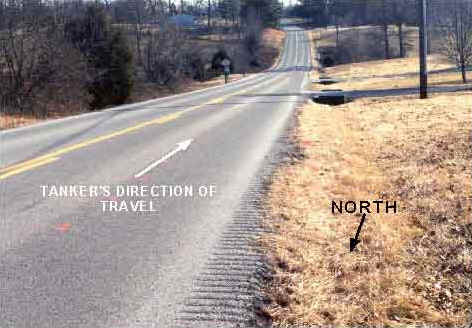
Photo 1. Eastbound view of the road where the tanker veered off
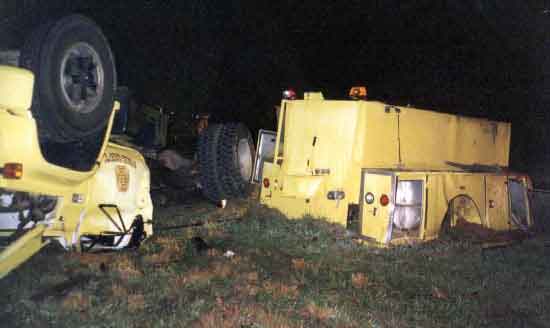
Photo 2. Incident scene
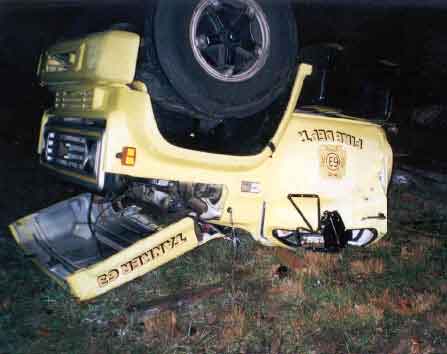
Photo 3. Cab area of tanker
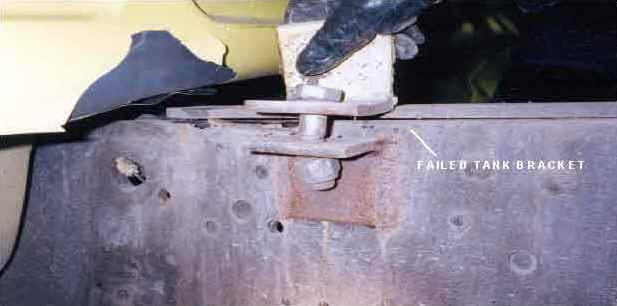
Photo 4. Driver’s side front tank mount; tank bracket failed along fillet weld to tank frame
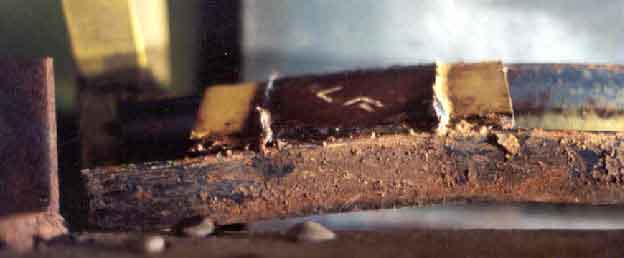
Photo 5. Tank frame at bracket location; weld material remains on tank frame
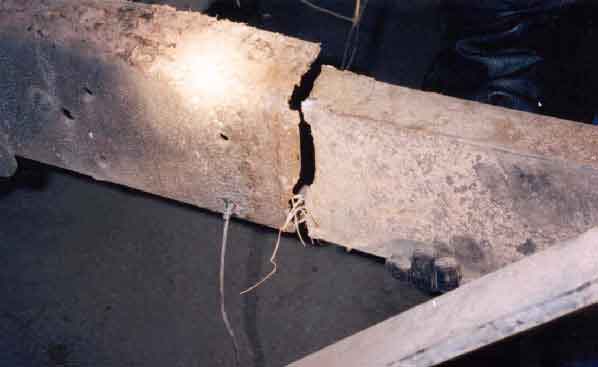
Photo 6. Driver’s side frame rail extension
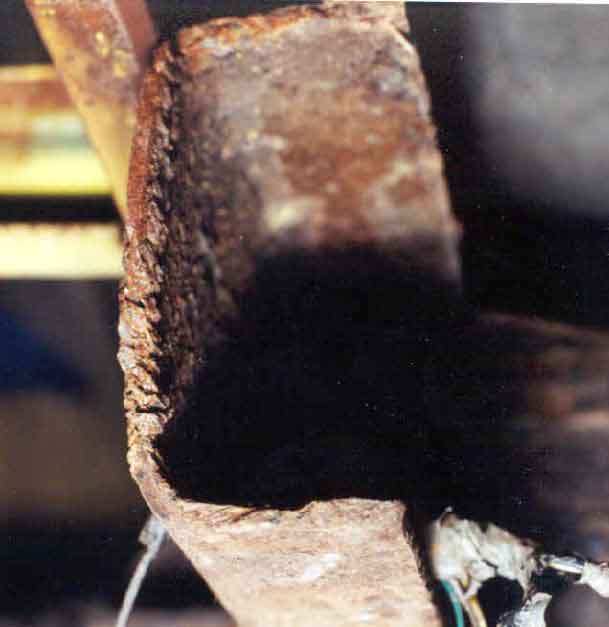
Photo 7. Driver’s side frame rail extension
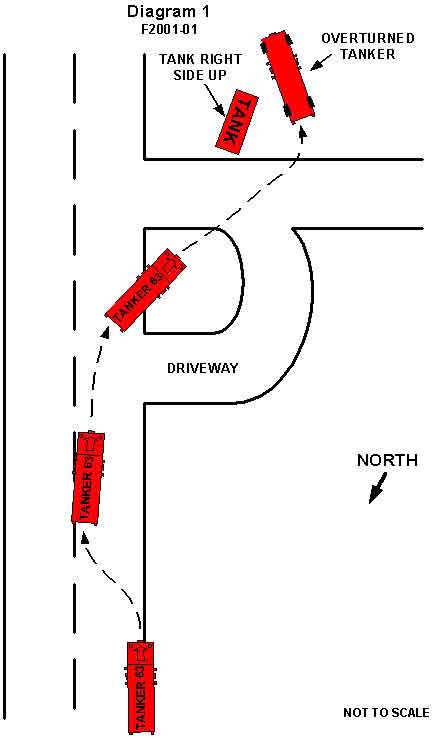
Diagram of incident
This page was last updated on 2/13/02
